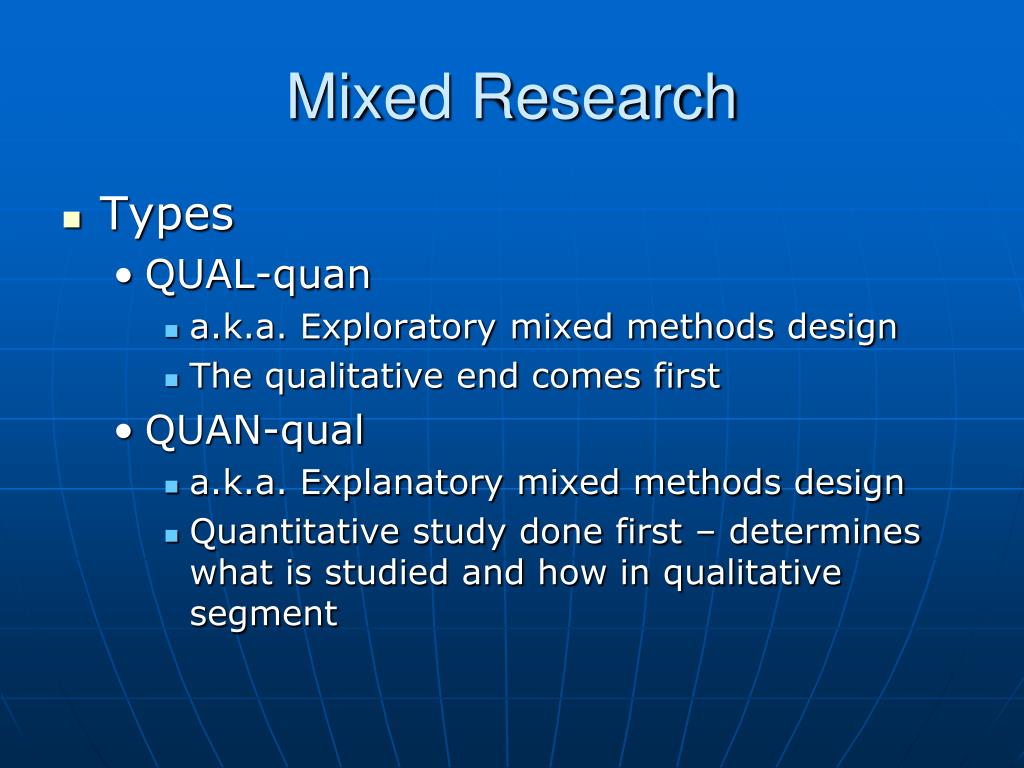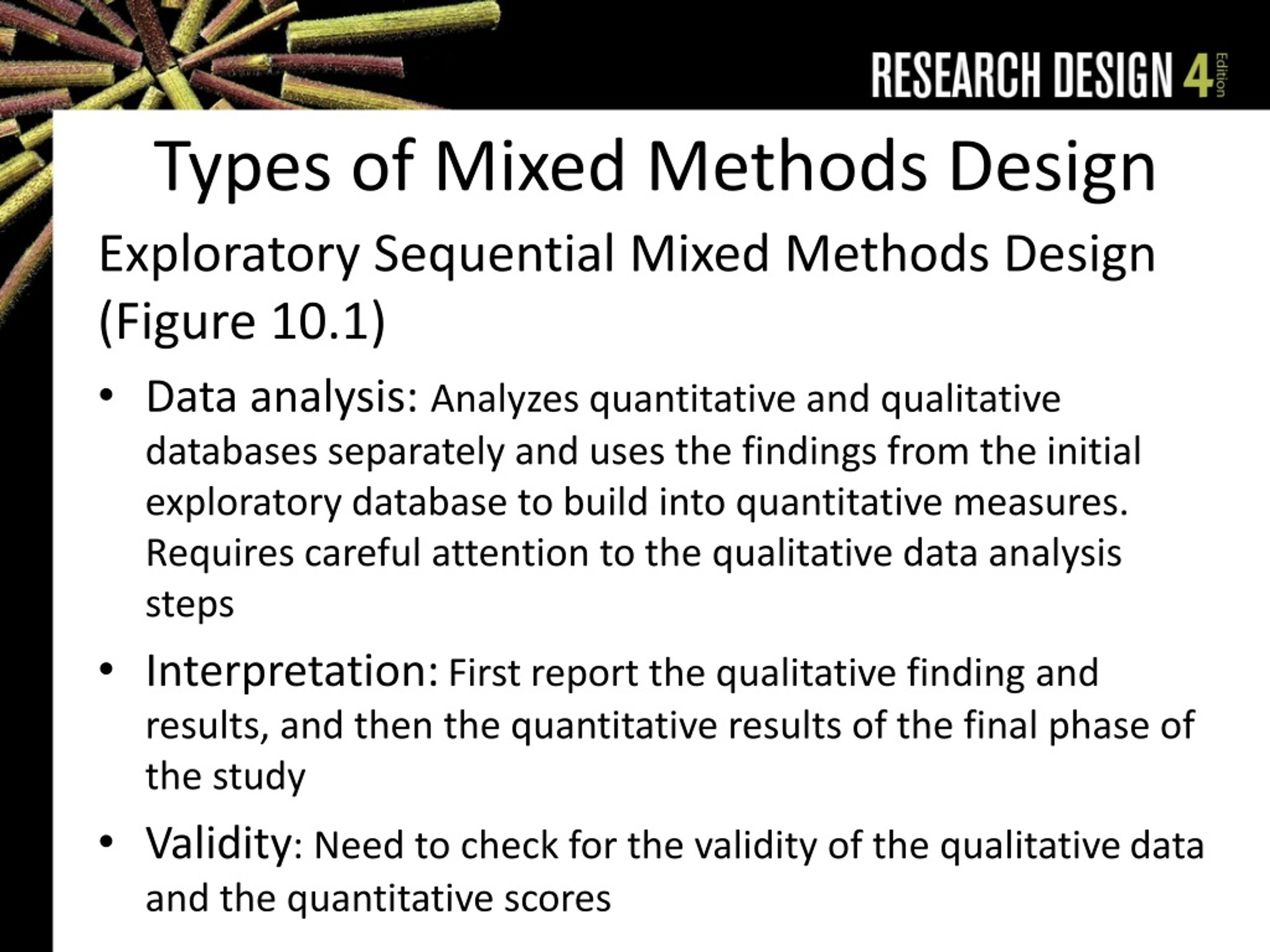The design of an Obstetric Telephone Triage Guideline OTTG: a mixed method study Full Text
Table Of Content

Thus, the act of mixing methods à la MMR has the paradoxical effect of encouraging a crude black box approach to methods. This is a third problematic characteristic of MMR, because it hinders a detailed study of methods that can lead to a much richer perspective on mixing methods. Thus, the coupling of innovative strategies to specific field positions based on the amount of scientific capital alone is not straightforward. It is therefore helpful to introduce a second differentiation in the field that, following Bourdieu (1975, p. 103), is based on the differences between the expected profits from these strategies. Here a distinction can be made between an autonomous and a heteronomous pole of the field, i.e., between the purest, most “disinterested” positions and the most “temporal” positions that are more pervious to the heteronomous logic of social hierarchies outside the scientific field.
The relevance of mixed-methods in health research
The communication category includes items such as last menstrual period, age, gestational age, number of pregnancies and parity, and obstetric and medical history. A total of 26 articles were included in the study, and items related to obstetric telephone triage not existing in the pool of items obtained from the qualitative stage were added to the main items. Participants are also asked to provide an email address and collateral contact information for one or more people to ensure that the study team can reconnect with them when it is time to complete a shorter survey five more times, one every 3 months (i.e., quarterly) until 15 months.
Community Engagement Program
It is under the purposive discretion of the researcher to determine whether a concurrent-dependent design, a concurrent-independent design, a sequential-dependent design, or a sequential-dependent design is needed to answer a particular research question or set of research questions in a given situation. Using the outcomes of the first research component, the researcher decides what to do in the second component. Depending on the outcomes of the first research component, the researcher will do something else in the second component. If this is so, the research activities involved are said to be sequential-dependent, and any component preceded by another component should appropriately build on the previous component (see sequential validity legitimation; Johnson and Christensen 2017; Onwuegbuzie and Johnson 2006).
Intervention
The aim is to develop an overall explanation that fits both the sense and the anti-sense (Bazeley and Kemp 2012; Mendlinger and Cwikel 2008). Finally, a reanalysis of the data can sometimes lead to resolving divergence (Creswell and Plano Clark 2011). (b) Context – refers to cases in which the combination is justified in terms of qualitative research providing contextual understanding coupled with either generalizable, externally valid findings or broad relationships among variables uncovered through a survey.
3 Agency interviews
Department of Agriculture’s Food and Nutrition Service (FNS) and through 89 WIC agencies at the State level, including 50 States and the District of Columbia, 33 Indian Tribal Organizations (ITOs), and five territories (2). Participation in WIC brings several health benefits, including improvement in child feeding practices and increases in adequate growth/weight status and cognitive development for infant and child participants (3, 4). The WIC food package is a pillar of WIC services as it provides essential food to support a healthy, well-balanced diet (5). The cash-value benefit (CVB) is part of the food package, which allocates a monthly dollar amount to spend on fruits and vegetables (FVs) (5).
It is also possible to let the interview questions depend upon the outcomes of the analysis of the questionnaire data (or vice versa); in that case, research activities are performed dependently. Similarly, the empirical outcome/effect and process in a study with the purpose of expansion might be investigated independently, or the process study might take the effect/outcome as given (dependent). In a commonly used mixed methods notation system (Morse 1991), the components are indicated as qual and quan (or QUAL and QUAN to emphasize primacy), respectively, for qualitative and quantitative research. Note that each research tradition receives an equal number of letters (four) in its abbreviation for equity. Using qualitative and quantitative data in one study allows researchers to understand their subject more deeply.
ORIGINAL RESEARCH article
An inaccurate understanding of the situation or exaggeration of the event disrupts triage personnel’s judgment and causes loss of information [46]. Obstetric telephone triage is a complex multifaceted process affected by different internal and external factors [27]. Having a unified national guideline on telephone triage can reduce weaknesses in management and planning. Finally, the items extracted from the qualitative study (using an inductive approach) were integrated with the items extracted from the literature review (using a deductive approach) results and initial draft of the obstetric telephone triage guideline was created. In the deductive approach, otherwise, the items related to obstetric telephone triage, which were not identified in the qualitative phase, were then added to the main items.
When designing a mixed methods study, it is occasionally helpful to list the theoretical drive in the title of the study design. An investigation, in Morse and Niehaus’s (2009) view, is focused primarily on either exploration-and-description or on testing-and-prediction. In the first case, the theoretical drive is called “inductive” or “qualitative”; in the second case, it is called “deductive” or “quantitative”. In the case of mixed methods, the component that corresponds to the theoretical drive is referred to as the “core” component (“Kernkomponente”), and the other component is called the “supplemental” component (“ergänzende Komponente”).
Types of mixed method research designs
In addition to our study participants, we would like to thank those who helped implement the programs at Miracle Messages, including Colette Lay, Jenni Taylor, John Ma, Nelly Stastny, Lindsay Pfeiffer, Rosalie Silva, and Ashley Dockendorf. Characteristics of the 76 WIC participants who participated in the interviews are highlighted in Table 3. Approximately half of the participants identified as White, one-fourth as African American or Black, and one-fifth as American Indian/Alaska Native, other race, or multiracial. Participants residing in rural or urban areas were close to an even split – 46.0 and 54.0%, respectively. The EQUALITY study used an exploratory sequential design to identify the optimal patient-centered approach to collect sexual orientation data in the emergency department.

This research aimed to examine CVB implementation from the perspective of the individual, practice, program, organization, policy, and population levels per the I + PSE framework for Action, but retailer perspectives and impacts were beyond the scope of this project. Future research should aim to examine the national economic contribution of changes to the CVB for WIC-authorized retailers. Still, the program has inconsistent requirements across states and a high regulatory burden for retailers (37), which may deter retailers from accepting WIC benefits as payment. Therefore, future exploration of the impact of the CVB from their perspective could strengthen the argument for retailers to consider gaining or maintaining the WIC-authorized status. Possessing less scientific capital, they hold less consecrated positions and their chances of introducing successful innovations are much lower. One is to revert to a strategy of adaptation, accepting the established hierarchy in the field and embarking on a slow advancement to gain the necessary capital to make their mark from within the established order.
Its origins and circulation in vocational studies rather than classical academic disciplines can be understood from the position these studies occupy in the scientific field and the kinds of position-taking and innovations these positions give rise to. This context allows a reflexive understanding of the content of MMR and the issues that are dominant in the approach. In addition to the six primary design dimensions or considerations, we provided a set of additional or secondary dimensions/considerations or questions to ask when constructing a mixed methods study design. Our purpose throughout this article has been to show what factors must be considered to design a high quality mixed methods research study. The more one knows and thinks about the primary and secondary dimensions of mixed methods design the better equipped one will be to pursue mixed methods research.
Evaluating programs for young people with a family member with mental health challenges: protocol for a mixed ... - BMC Psychology
Evaluating programs for young people with a family member with mental health challenges: protocol for a mixed ....
Posted: Fri, 10 Mar 2023 08:00:00 GMT [source]
This problem does not fully apply to Morse’s notation system, which can be used to symbolize some more complex designs. We call two research components dependent if the implementation of the second component depends on the results of data analysis in the first component. Two research components are independent, if their implementation does not depend on the results of data analysis in the other component. A researcher could analyze interview data and questionnaire data of one inquiry independently; in that case, the research activities would be independent.
Differences were found among racial/ethnic groups, with lower redemption rates observed for non-Hispanic Black caregivers. The frequent and quick turnaround CVB changes strained WIC agency resources with agencies serving higher caseloads of diverse racial and ethnic populations experiencing greater issues with implementing the CVB changes. We find this strong drive to develop methodologies, definitions, and typologies of MMR as guides to valid mixed methods research problematic. Researchers are asked to make a choice for a particular MMR design and adhere to the guidelines for a “proper” MMR study. Such methodological prescription diametrically opposes the initial critique of the mechanical and unreflexive use of methods.
Comments
Post a Comment